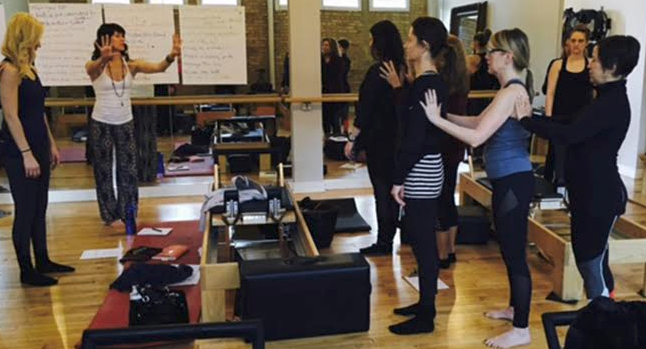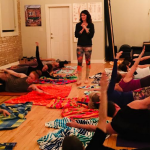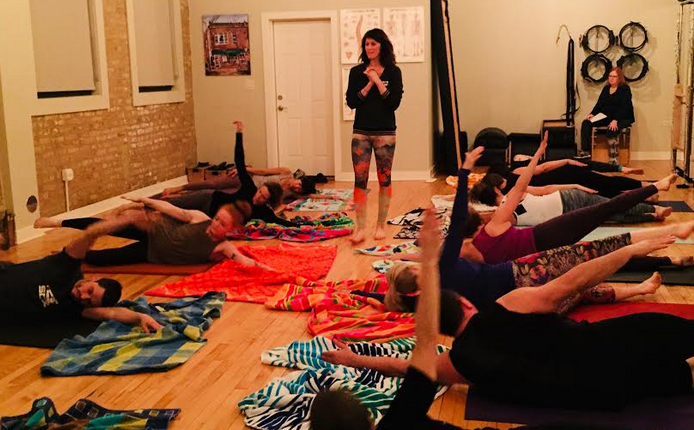Issue #352 – Wednesday, November 17, 2021
When GOOD Teaching IS Your Business
(Whose Business is Bad Teaching? Part 3)
Awareness of Other + Context
by Chantill Lopez
Being a teacher and being a parent are the two most transformative experiences I’ve ever had.
Both force you to be uncomfortable in the face of not knowing; to fall down over and over again in an effort to do good and help support the emerging of another person or some aspect of that person. A prospect that is sometimes akin to groping blindly in the dark while walking through an unknown forest.
Both also reveal your depth, the capacity of your heart and spirit, the edges to which you can be drawn out of your small self into a bigger, braver, wiser, more curious, more willing self. And what a true and ultimate joy it is when the person you’re “being with” emerges a bit more with you – a co-emerging.
Learning and teaching are living processes just like any human interaction must be to be healthy.
We hear “I teach to the body in front of me” a lot. Often the implication is that this is the pinnacle of teaching intimately and makes the highest impact: taking each individual body as it is and working to train it toward wholeness and health.
In this third, but NOT final article on this topic, I want to encourage you to expand that notion to: “I teach the WHOLE PERSON in front of me”; to get curious about the prospect of making an even greater impact on your students by becoming a student of teaching, not just a lifelong learner of technique.
A Brief Review of Part 1 and 2
In the earlier parts of this series, we explored the work of Vanessa Rodriquez, author of The Teaching Brain and her premise that to be an “expert teacher” we must develop many dynamic layers of awareness of ourselves, our students, and the contexts in which we teach. Link to Part 1 and Link to Part 2
If we don’t, we run the steep risk of the opinions and perceptions we form of our students and their abilities becoming fixed rather than fluid. The same is true of ourselves and our ability to grow as teachers and people.
Awareness of Our Students
In Part 2, I invited you to explore a series of questions to help reveal how you perceive yourself in relationship to your students and your teaching.
Now, we turn the lens on how we can perceive the many different aspects of our students and the different ways in which they engage with their learning experience as a whole:
In Part 3, we will explore our students’ Inner Context: why they do what they do; how they learn; their emotional state; and their ability to remember. In future articles (Part 4 and beyond), we will explore Outer Context (the impact of environment) and the Nervous System (including how to optimize the brain for learning)
As teachers, we are already especially attentive to how a student’s body is reacting to our words, our touch, and other physical factors. However, we tend to overlook or not know what to do with the other things we notice like their emotional state, how they learn most easily, or how they are best motivated. Or perhaps we choose to let this information remain untapped because we think it’s out of our scope of practice to address it directly.
But therein lies the beauty of expert teaching! You aren’t teaching something you aren’t qualified to teach; you’re simply learning to become a more astute practitioner of the art and science of teaching itself, which makes all ships rise.
To help us organize our “whole person” approach, we’ll draw once again from the developmental psychology Vanessa Rodriguez presents in The Teaching Brain.
We can understand our students’ inner context as being comprised of four components:
Theory of Mind
- What: Our awareness and perception of why a student does what they do; the reasons underlying their behavior.
- Why it Matters: Becoming aware of what our students are attending to, how they are evaluating their experience, and what is motivating their actions is critical to effectively adapting HOW we teach them. In the past, we might have thought of this, or any of the awarenesses, as promoting a student-centered teaching approach. However, this goes a step further allowing us to hold ourselves and our students equally at the center of the experience. I have come to call this way of teaching student-teacher reciprocal.

Theory of Cognition
- What: Our ability to be aware of and understand how someone processes information.
- Why it Matters: Awareness and insights into how a student best learns or processes information help us adapt our planning, our verbal and manual cues, our timing, our progressions, when to review or dig deeper into a particular concept and how to do that (verbally, visually, kinesthetically, when to talk and when to be quiet). How our students process information (not how we think they should or assume they will) is one of the most important aspects of a successful learning and growth experience. It also helps us to eliminate barriers to learning by NOT choosing strategies that our students typically struggle with.
Theory of Emotion
- What: The level of awareness you bring to your student’s emotional state; asking questions like “How might a student feel if I ask them this question, make this request of them, demand this level of skillfulness, put them in this type of situation?”. Think of your student’s emotions as an important form of context for their ability to learn. Emotions directly relate to the formation of perception and how a student perceives herself, her environment, her skill level, etc. and will affect how successful she is in engaging in the learning process and her ability to create implicit memories.
- Why it Matters: Holy smokes! What could matter more?! Our emotional state, nervous system, and ability to create working memory are linked. A student who feels unsafe in their body will perceive the situation as negative, which in turn impairs their capacity for learning. IT MATTERS.
Theory of Memory
- What: This is an awareness of our student’s ability to remember movement, instructions, or other information we’ve taught them. Theory of Memory also includes being able to decipher whether or not a thing has been stored in short- or long-term memory.
- Why it Matters: Helps us to determine when and how often to repeat, in what form (verbal or visual, etc.) to repeat, and how to be creative in supporting our students in remembering the work. It’s not the same for everyone. Our goal in all of this is to eliminate barriers to learning.
How to Develop Your Awareness
As with all of the awarenesses we must never assume. Instead, we:
- ATTEND: to the specific aspect of our student.
- GATHER: information, including what we see, hear, feel, and intuit.
- ASK: in order to compare and contrast what we are experiencing with what the student is experiencing.
- FORMULATE and ASSESS: so that, over time, we adapt our teaching to optimize our students’ learning. This takes time and curiosity AND it deeply involves our students in the process, which is inspiring, refreshing, fun, and liberating.
When we engage in “expert teaching” we are called to be present AND to be constantly curious and open to what emerges (rather than strictly training or instructing according to our conscious or unconscious agenda). We become able to teach MORE THAN JUST THE BODY IN FRONT OF US — to see and learn how all of the other aspects of our students impair or support their learning and growth experience.
I can’t wait to share more with you and help you take your expert teaching self to the next level.
REQUEST:
Reach out to me and let me know how this is landing (that’s me asking 😉 I really want to know how this Whole Person Approach and developing yourself as an expert learner is affecting you and your students. What questions do you have? How can I support you? You can click here to visit my website for a more in-depth version of this article with detailed examples.

Chantill Lopez – My passion is teaching and learning from the whole-person and whole-body perspective. My work draws from brain-based learning frameworks, motivation and communication science, somatic and humanistic psychology, and other models such as the Polyvagal Theory, that support movement teachers in truly excelling not just as technicians but as skillful and passionate teachers!
I’m a huge advocate of teachers making what they’re worth, learning how to step into their genius while leveraging business models that support time, location, and financial freedom. You can see my work at it’s best as the co-creator and facilitator of Pilates Master’s Program, a 90-day intensive that teaches you how to build dynamic, scalable, and flexible hybrid — or fully online offerings — AND develops you as an EXPERT teacher (I mean if you like to geek out on brain science and the nervous system ).
If you want to learn more about my work and you’re interested in having rich and provocative conversations about teaching and how to not only weather the storm but flourish when things get tough, join me here.


